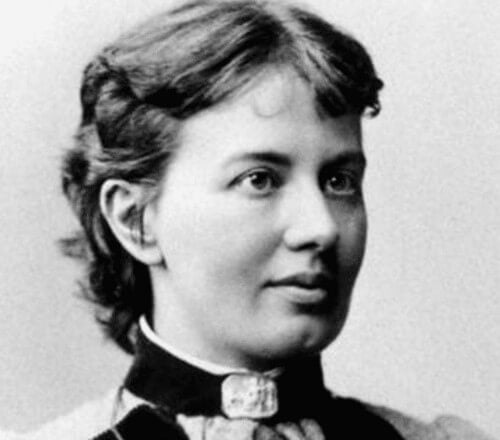Discover the biography of Sofya Kovalevskaya, a woman noted both for her contributions to the fields of mathematics and physics and for her impressive tenacity. She was born at a time when women had the door closed to education and could not even exercise the right to travel without the permission of their father or husband.
The most interesting thing in Sofya Kovalevskaya’s life is precisely how she has managed to overcome all the limitations that society imposes on her and make her dreams and projects come true, she was the first woman to complete her university studies in the world, she was also the first recognized university professor in the world.
- “Is it impossible to be a mathematician without having the soul of a poet [?] The poet must be able to see what others do not see.
- He must see more deeply than others.
- And should the mathematician do the same?-Sofya Kovalevskaya -.
Unknowingly, Kovalevskaya became a pioneer figure in feminism and has shown that determination is an unstoppable force that sometimes helps people achieve what seems impossible.
Sofya Kovalevskaya, in addition to an important career in the scientific field, has also entered the world of writing, devoted herself to poetry, scientific dissemination and contributed to astronomy.
Sofya Kovalevskaya was born into a very private family; on the maternal side, he was a descendant of the King of Hungary, Matas Corvino; however, his grandfather married a gypsy, contrary to royal rules, so he was denied the title of prince to which he was entitled.
On his father’s side, he had several famous relatives among his Polish ancestors, such as cartographer Friedrich Schubert and astronomer Theodor von Schubert.
Sofya was born on January 15, 1850 in Moscow, Rusia. Sa older sister was the famous socialist Anna Jaclard. When she was very young, she moved to Belarus with her family, in an environment strongly influenced by science and knowledge. uncles, and sometimes his father, instilled in him a great love of reading and research.
Arriving in Belarus, the family realized that pieces of wallpaper were missing from a wall in Sofya’s room, so they decided to solve the problem by removing the pages from any book and pasting them to cover the empty spaces. differential calculation. The girl began to look and read the pages with surprise and interest.
Although his father hired private teachers to teach him the first lessons, he feared seeing Sofya’s progress. He was terrified of “smart women. ” She then interrupted her studies, however, the young woman continued to study alone and even managed to learn and deduce various algebra subjects.
The famous writer Fior Dostoyevsky wooed his sister, even though Sofya was totally in love with him, it was your impossible love.
Sofya and her sister knew that the only way to get a little freedom was to get married. At the time, many women agreed to marry for convenience.
It was common to make a deal with someone to make a formal marriage, and then everyone could live freely, Anna, Sofya’s older sister, explored this option with paleontologist Vladimir Kovalevski, however, she preferred to marry Sofya, who was only 18 years old. .
Unsurprisingly, the wedding offered Sofya Kovalevskaya new opportunities. They moved first to Heidelberg and then to Berlin.
There she met the celebrated mathematician and analyst Karl Weierstrass, who at first did not believe in Sofya’s talent, when she realized her passion and intelligence, asked her to be accepted to college as a student, but the university refused, so she decided to do so. give him private lessons.
Thanks to Weierstrass’ support, Sofya was able to obtain his medical degree, which allowed him to present his thesis without being physically present, from there he embarked on a long journey to get a job that would allow him to develop his talent.
About ten years after graduating, her friend Gustav Mittag-Leffler helped her become a professor at Stockholm University.
At the time, Sofya had a daughter and her husband had committed suicide. His widowness helped reduce employment resistance.
Throughout her life she has received several awards, she was the first woman to enter the Russian Academy of Sciences, died prematurely at the age of 41 of pneumonia, one of the craters of the moon named after her great contributions. .
Looking at Sofya Kovalevskaya’s biography, we see that she was one of the many brilliant female figures the story has tried to hide. She is barely mentioned in schools, but her career is as remarkable and even more impressive than that of some of her contemporaries.
She was one of those incredible spirits that, regardless of gender, flourish from time to time in human history.

